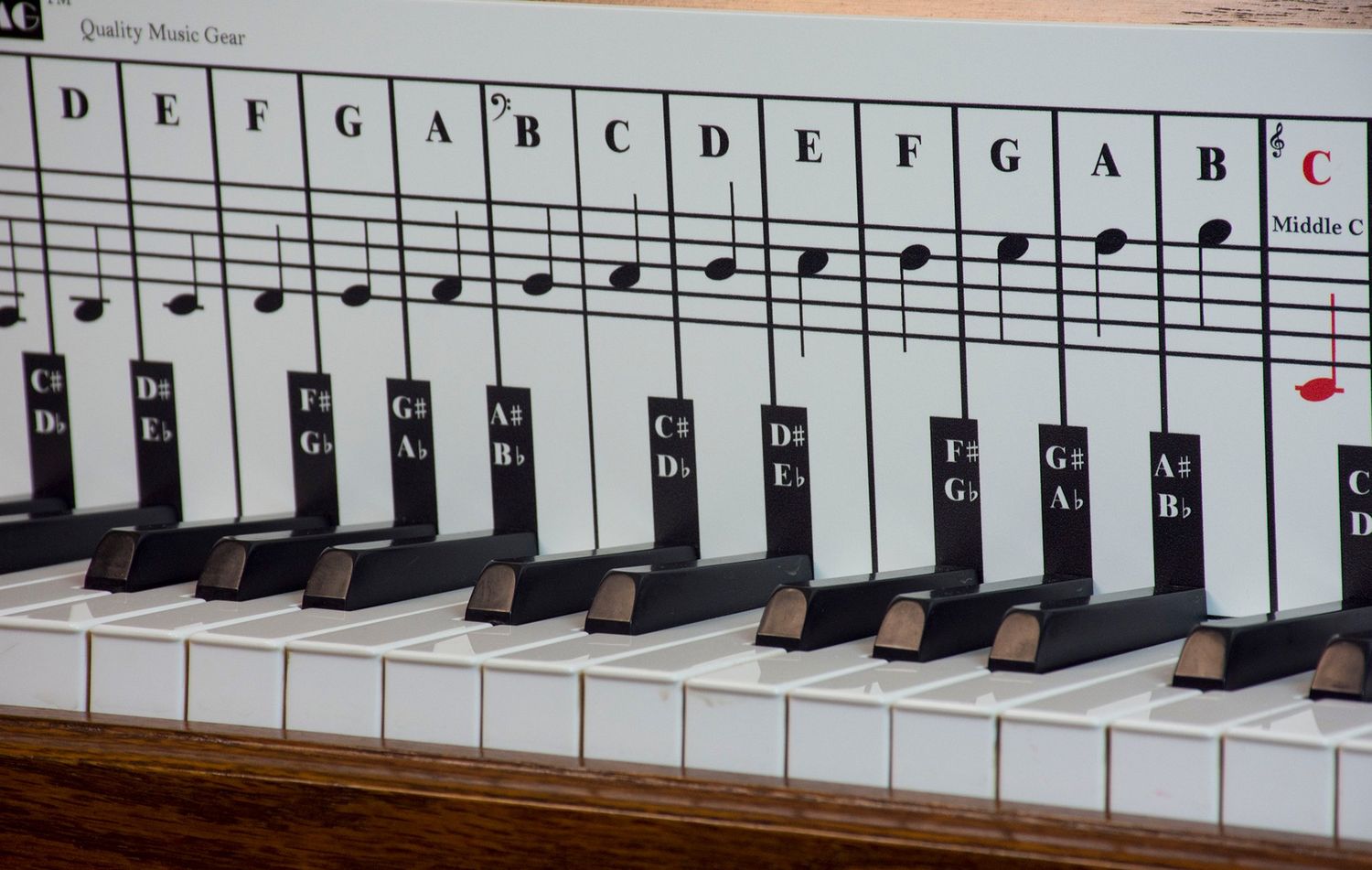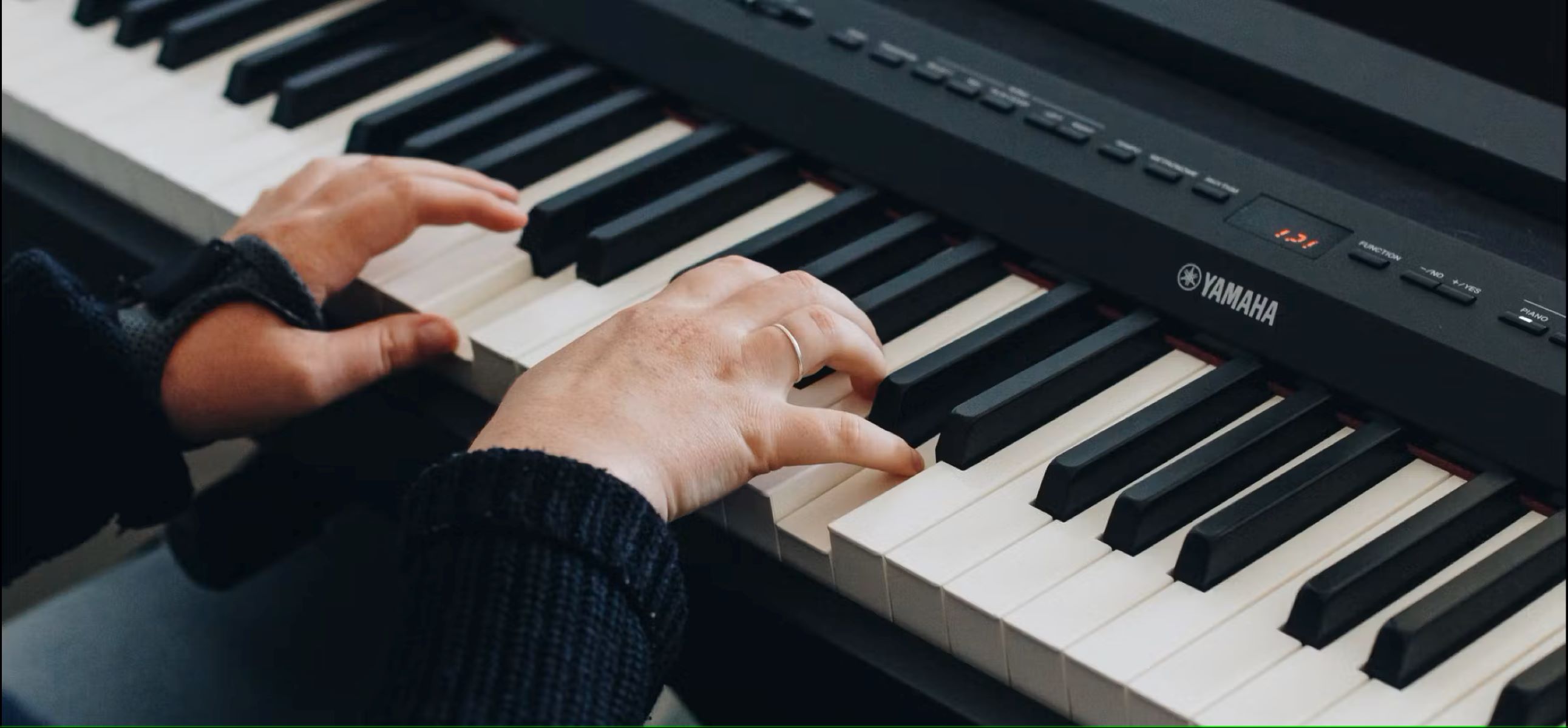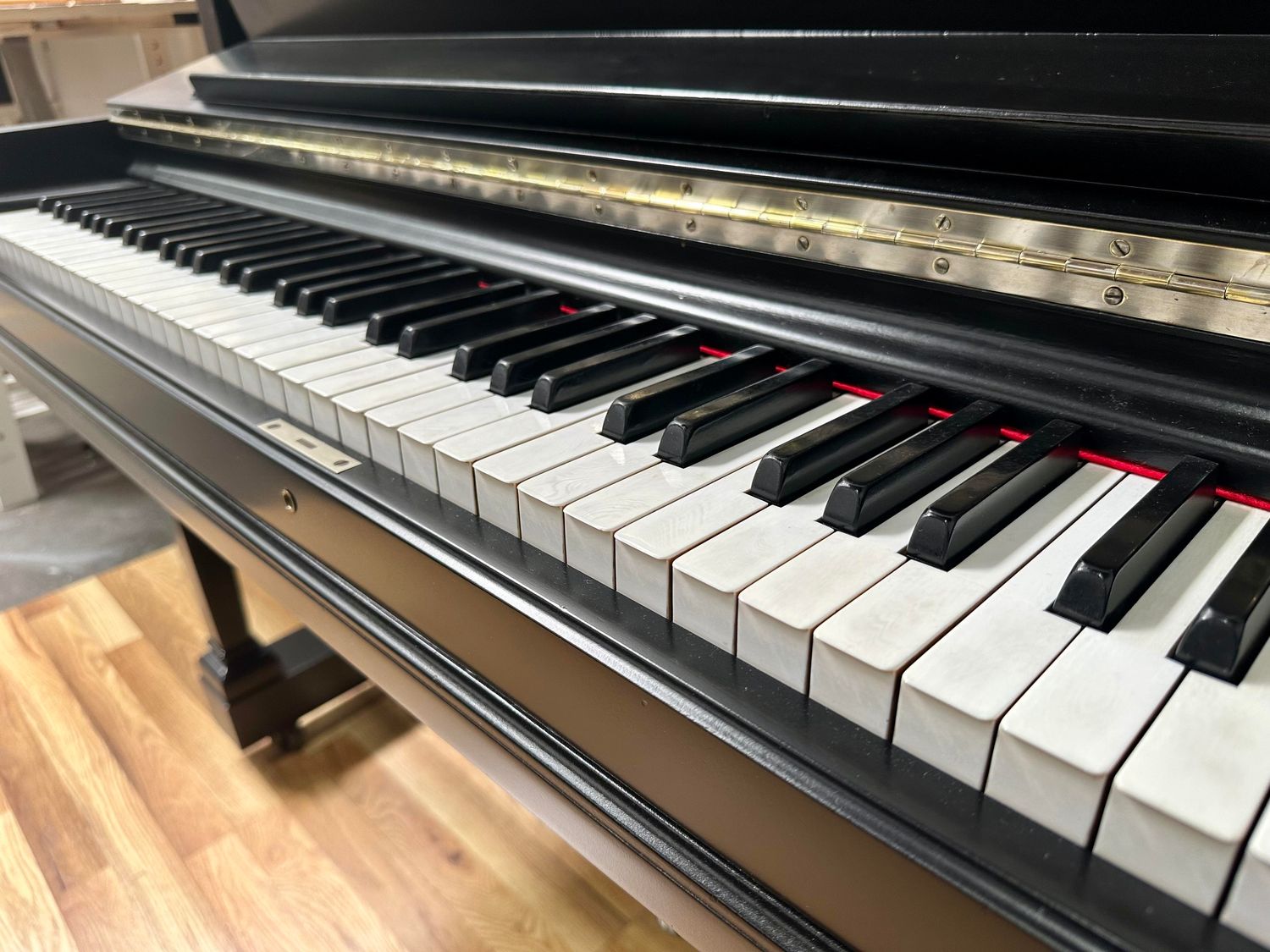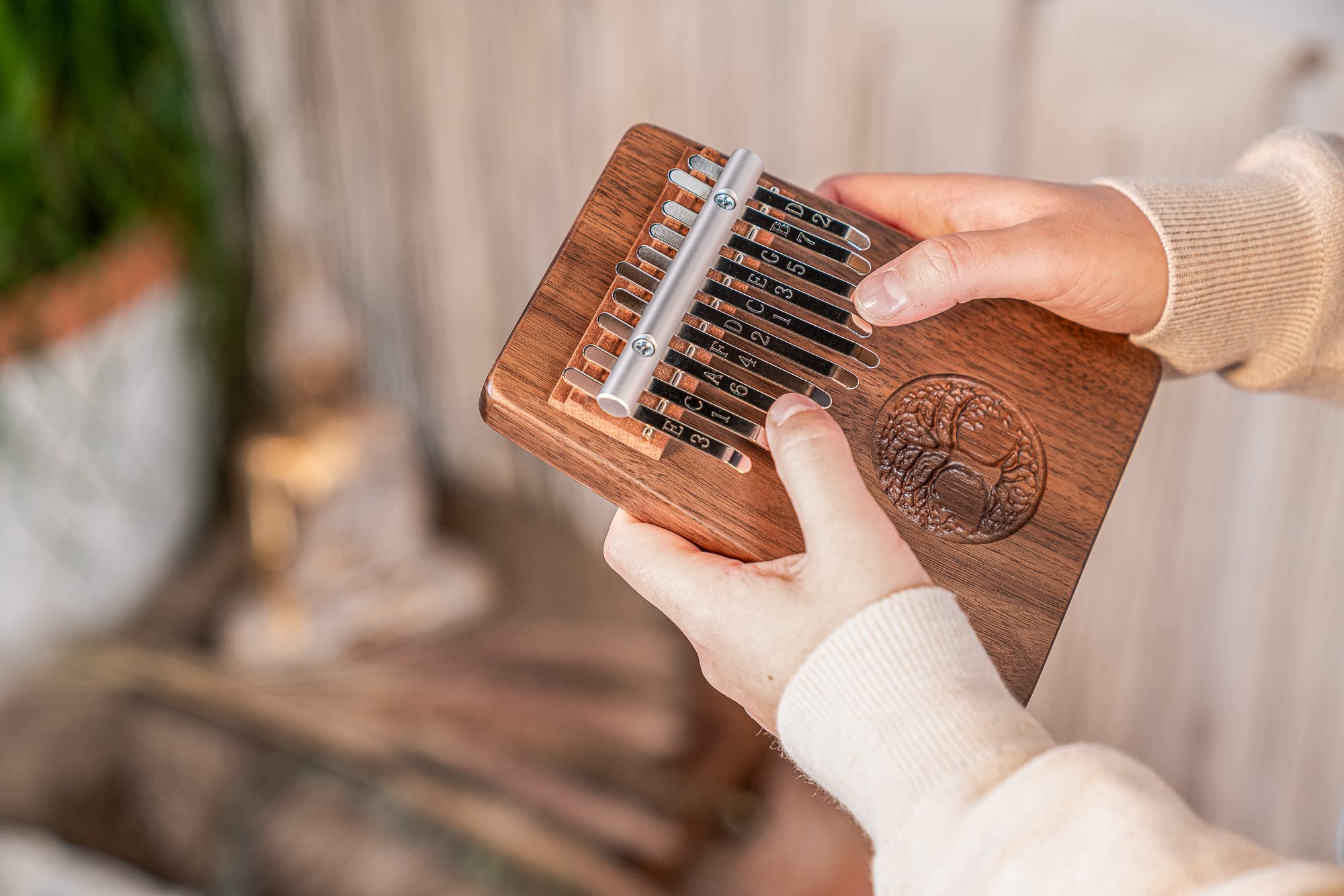Home>Instruments>Piano>How To Play Ab On Piano


Piano
How To Play Ab On Piano
Published: February 10, 2024
Learn how to play Ab on piano with our easy step-by-step guide. Master the piano and impress your friends with your new skills today!
(Many of the links in this article redirect to a specific reviewed product. Your purchase of these products through affiliate links helps to generate commission for AudioLover.com, at no extra cost. Learn more)
Table of Contents
Introduction
Introduction
Playing the piano is a rewarding and fulfilling endeavor, allowing musicians to express themselves through the beautiful language of music. If you're looking to expand your repertoire and delve into the captivating world of piano, mastering the A-flat major scale and chords can add depth and richness to your playing. In this comprehensive guide, we will explore the fundamentals of playing A-flat on the piano, from understanding the A-flat major scale to mastering common progressions and essential tips for honing your skills.
Whether you're a beginner seeking to broaden your musical horizons or an experienced pianist looking to enhance your proficiency, learning to play A-flat on the piano opens up a world of melodic possibilities. From classical compositions to contemporary tunes, the A-flat major scale and chords offer a versatile and expressive foundation for creating captivating music.
Throughout this guide, we will delve into the intricacies of the A-flat major scale, explore basic A-flat chords, and provide step-by-step instructions for playing the A-flat major scale on the piano. Additionally, we will uncover common A-flat progressions that can elevate your playing and offer valuable tips to refine your A-flat piano skills. By the end of this journey, you will have a deeper understanding of A-flat on the piano and the tools to infuse your musical creations with the enchanting allure of this key.
So, let's embark on this musical odyssey and unlock the secrets of playing A-flat on the piano, enriching your musical journey with the timeless charm of this captivating key. Whether you aspire to perform soul-stirring ballads, exhilarating jazz pieces, or enchanting classical compositions, mastering A-flat on the piano is a pivotal step toward realizing your musical aspirations.
Understanding the A-flat Major Scale
Understanding the A-flat Major Scale
Before delving into the intricacies of playing A-flat on the piano, it’s essential to grasp the fundamental building block of music in this key: the A-flat major scale. The A-flat major scale consists of the following notes: A-flat, B-flat, C, D-flat, E-flat, F, and G. This sequence of notes forms the melodic foundation for compositions in the key of A-flat, lending a distinct tonal character to the music.
When visualized on the piano, the A-flat major scale spans three octaves, showcasing the harmonic progression from the lower register to the higher octaves. Familiarizing yourself with the layout of the A-flat major scale on the piano keyboard is crucial for fluid and confident playing, enabling you to navigate the notes with ease and precision.
Understanding the intervals within the A-flat major scale is integral to internalizing its sound and structure. The intervals between the notes of the A-flat major scale follow a specific pattern: whole step, whole step, half step, whole step, whole step, whole step, half step. This sequence of intervals imparts the characteristic tonality and mood of the A-flat major scale, distinguishing it from other musical keys.
As you acquaint yourself with the A-flat major scale, take the time to play and listen to its notes, allowing their resonant harmonies to permeate your musical sensibilities. By immersing yourself in the distinct tonal palette of the A-flat major scale, you can develop a profound connection with this key, paving the way for expressive and emotive piano performances.
Mastering the A-flat major scale lays a solid foundation for exploring a myriad of musical genres, from classical compositions to contemporary pieces. The rich and resonant sound of the A-flat major scale lends itself to evocative melodies, harmonies, and chord progressions, making it a versatile and captivating key for pianists of all levels.
Basic A-flat Chords
Basic A-flat Chords
As you venture into the realm of piano playing, familiarizing yourself with basic A-flat chords is essential for building a strong harmonic foundation. The A-flat major chord, comprising the notes A-flat, C, and E-flat, forms the cornerstone of harmonic progression in the key of A-flat. This triad emanates a rich and resonant quality, serving as a pivotal element in compositions across various musical genres.
Expanding your chord repertoire to include the A-flat minor chord is equally important for diversifying your harmonic palette. The A-flat minor chord, constructed with the notes A-flat, B, and E-flat, introduces a poignant and introspective tonality to your musical compositions. By integrating the A-flat minor chord into your repertoire, you can evoke a spectrum of emotions, infusing your piano pieces with depth and nuance.
Furthermore, the A-flat dominant seventh chord, featuring the notes A-flat, C, E-flat, and G-flat, adds a touch of complexity and tension to your harmonic explorations. This chord’s distinctive blend of stability and dissonance opens up a world of expressive possibilities, allowing you to craft compelling musical narratives that captivate the listener’s ear.
As you acquaint yourself with these basic A-flat chords, take the time to experiment with their voicings and inversions across the piano keyboard. Exploring different chord voicings and inversions empowers you to create lush and dynamic harmonic progressions, enriching your musical arrangements and compositions.
Mastering the foundational A-flat chords not only enhances your technical proficiency but also nurtures your artistic expression, enabling you to convey a diverse range of emotions and moods through your piano performances. Whether you’re delving into soulful ballads, stirring classical pieces, or vibrant jazz compositions, the versatility of A-flat chords provides a compelling harmonic backdrop for your musical endeavors.
Playing A-flat Major Scale on the Piano
Playing A-flat Major Scale on the Piano
Mastering the A-flat major scale on the piano is a transformative journey that enhances your technical dexterity and musical fluency. To begin playing the A-flat major scale, position your right hand with the thumb (1) on A-flat, the index finger (2) on B-flat, the middle finger (3) on C, the ring finger (4) on D-flat, the little finger (5) on E-flat, and continue with F (1), G (2), and A-flat (3) with the thumb crossing over. For the left hand, start with the little finger (5) on A-flat and ascend through the scale, concluding with the thumb (1) on E-flat, F (2), G (3), and A-flat (4).
As you navigate the A-flat major scale on the piano, focus on maintaining a fluid and even tempo, ensuring that each note resonates with clarity and precision. Pay attention to the curvature of your fingers and the positioning of your hand, aiming for a relaxed and natural posture that facilitates effortless movement across the keys.
Practicing the A-flat major scale in ascending and descending patterns fosters muscle memory and agility, refining your ability to traverse the keyboard with grace and accuracy. Embrace a deliberate and patient approach, allowing each repetition to instill a sense of familiarity and comfort with the A-flat major scale’s melodic contours.
As you become proficient in playing the A-flat major scale, explore variations in articulation and dynamics to imbue the scale with expressive nuances. Experiment with legato phrasing for seamless connectivity between notes, as well as staccato articulation to infuse the scale with rhythmic vitality and verve.
Integrating the A-flat major scale into your daily practice regimen cultivates a strong foundation for navigating the broader landscape of piano repertoire. Whether you’re embarking on classical sonatas, jazz improvisations, or contemporary compositions, the technical prowess honed through mastering the A-flat major scale empowers you to approach diverse musical genres with confidence and finesse.
Common A-flat Progressions
Common A-flat Progressions
Exploring common progressions in the key of A-flat unlocks a treasure trove of harmonic possibilities, enriching your piano playing with captivating tonal sequences and emotive cadences. The A-flat major chord serves as the tonic, anchoring many progressions with its resolute and sonorous presence. One prevalent progression is the I-IV-V-I, incorporating the A-flat, D-flat, and E-flat major chords, culminating in a satisfying resolution to the tonic A-flat chord.
Delving into the realm of minor progressions, the A-flat minor chord infuses compositions with poignant and introspective tonalities. The i-VI-III-VII progression, featuring the A-flat minor, F minor, C minor, and G-flat major chords, evokes a sense of melancholic beauty and contemplative depth, offering a captivating harmonic journey for emotive musical expressions.
Furthermore, the incorporation of dominant seventh chords in A-flat progressions introduces a layer of tension and intrigue. The I-IV-ii-V progression, integrating the A-flat, D-flat, B-flat minor, and E-flat dominant seventh chords, weaves a compelling tapestry of harmonic movement, infusing compositions with dynamic energy and vibrant resolution.
As you explore these common A-flat progressions, consider experimenting with inversions and voicings to imbue the progressions with varied textures and tonal colors. Embrace the interplay of tension and resolution within these progressions, allowing the distinct characteristics of each chord to shape the emotive landscape of your musical narratives.
By integrating common A-flat progressions into your practice sessions and compositions, you cultivate a nuanced understanding of harmonic movement and create a rich tapestry of musical experiences. Whether you’re crafting soulful ballads, evocative film scores, or spirited jazz compositions, the diverse palette of A-flat progressions empowers you to weave captivating musical narratives that resonate with depth and emotion.
Tips for Playing A-flat on Piano
Tips for Playing A-flat on Piano
Mastering the art of playing A-flat on the piano encompasses technical proficiency, musical sensitivity, and a deep understanding of harmonic principles. Here are invaluable tips to elevate your A-flat piano playing:
- Hand Positioning: Maintain a relaxed and natural hand position when navigating A-flat scales and chords. Ensure that your fingers are curved and poised to exert precise control over the keys, fostering agility and dexterity.
- Thumb Under Technique: Embrace the thumb under technique when ascending and descending A-flat scales, facilitating smooth and seamless transitions across the keyboard. Practice this technique diligently to imbue your playing with fluidity and grace.
- Dynamic Expression: Infuse your A-flat piano performances with dynamic expression, exploring a wide spectrum of articulations and dynamics to imbue the music with emotive depth and vitality. Experiment with subtle nuances in touch and phrasing to convey a compelling musical narrative.
- Chord Voicings: Experiment with different voicings and inversions of A-flat chords, enriching your harmonic palette and enabling diverse and captivating progressions. Familiarize yourself with the unique timbres and textures produced by varying chord voicings, enhancing the richness of your musical arrangements.
- Ear Training: Cultivate a discerning ear through attentive listening and analysis of A-flat compositions. Train your ear to recognize the distinct tonal qualities and harmonic progressions associated with A-flat, honing your ability to interpret and perform music with precision and artistry.
- Practice Routine: Dedicate focused practice sessions to A-flat scales, chords, and progressions, integrating them into your daily regimen to fortify your technical prowess and musical fluency. Consistent and deliberate practice is key to mastering the intricacies of A-flat on the piano.
- Exploration and Creativity: Embrace a spirit of exploration and creativity as you delve into the realm of A-flat piano playing. Experiment with improvisation, composition, and reinterpretation of A-flat melodies, fostering a deep connection with this captivating key.
By incorporating these tips into your musical journey, you will embark on a fulfilling and enriching exploration of A-flat on the piano, honing your skills and nurturing a profound connection with the expressive potential of this captivating key.











